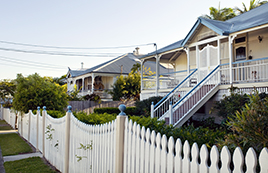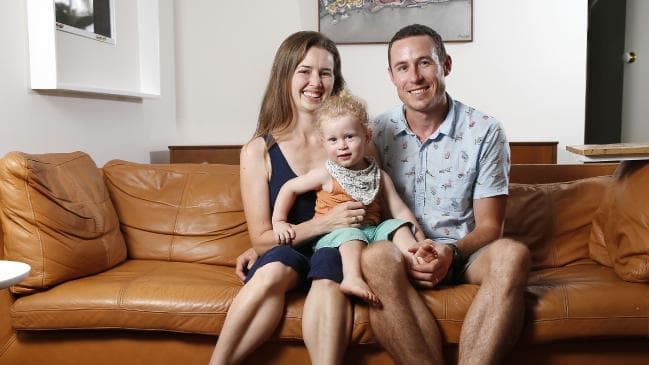Best of the Best 2016
We sum up how the housing market performed during 2016.
When summing up the 2016 housing market, CoreLogic head of research Tim Lawless noted two key words that best describe the activity across the year. These are: DIVERSITY and COMPLEXITY.
Tim Lawless comments:
Why DIVERSE? Because conditions have been radically different from region to region.
At one end of the spectrum we have Sydney and Melbourne where dwelling values are rising at more than ten per cent per annum, while in Perth, values continue to trend lower. In Canberra and Hobart, the pace of capital gains has accelerated with both cities seeing annual capital gains rise higher than 8 per cent over the past twelve months.
Brisbane and Adelaide have shown more sustainable growth with values tracking 4-5 per cent higher over the year. Across regional markets, the lifestyle and tourism-centric areas recorded an improvement in buyer demand which has pushed prices higher, while markets related to the resources sector remained soft and are likely approaching the bottom of what has been a dramatic downturn in values and transaction numbers.
Why COMPLEX? Because indicators are diverging and moving in many directions.
Approved housing supply reached unprecedented highs during 2016 with high rise apartment projects attracting a higher risk profile, particularly across key areas of inner Melbourne and Inner Brisbane. Transaction numbers have drifted lower across most state capitals, however the reason for lower transactions can be traced back to low listing numbers in hot markets like Sydney and Melbourne, while in weaker markets such as Perth and Darwin, the downturn in buyer numbers is attributable to less demand for housing.
A few trends to watch for in 2017 will be rising mortgage rates, a peak in the construction cycle, the potential for more regulation in the investor space, and renewed focus on housing affordability.
Mortgage rates have already started to rise, with announcements from most lenders that variable rates are nudging upwards due to higher funding costs. Higher mortgage rates have the potential to dampen housing demand, particularly when viewed in the context of historically high debt levels which implies households are already very sensitive to the cost of debt.
Dwelling approvals are likely to have peaked over the second half of 2016, however the construction pipeline remains substantial, particularly for high rise unit projects. As these units, which have largely been sold off the plan, approach completion, the risk of non-settlement is likely to become more visible as valuations fall short of contract prices and foreign buyers fail to secure finance.
Those unit projects in good locations offering a point of difference, and with less of a skew towards pure investor markets and overseas buyers, aren’t likely to show the same risk profile.
Investors remain a substantial component of housing demand in Australia, with investment demand consistently rising since the May rate cut. Based on ABS housing finance data, the value of investment-related mortgage commitments has increased by almost 16% since the first rate cut this year; investors now comprise approximately 49% of mortgage demand nationally.
Should regulators show discomfort with this level of investment (at a time when rental yields are at record lows) we may see a further regulatory response aimed at curbing investor activity. This may take the form of tougher speed limits placed on investment growth (currently set at 10% per annum), loan to valuation ratio limits, or geographical polices aimed at slowing investment in the hottest markets such as Sydney. Lenders may also be required to hold more capital against investment-related mortgages which would then widen the spread between owner occupier and investment mortgages.
The housing affordability topic is always bubbling below the surface. However, over recent months we have seen the issue become debated more fiercely in the public policy arena. The CoreLogic dwelling price to income ratios range from 8.4 in Sydney to 4.7 in Darwin, indicating that affordability of housing is vastly different from region to region.
The solution to housing affordability isn’t to see a crash in housing values (this would likely cause significant disruption to the economy considering more than half of household wealth in Australia is held in housing), but rather, it is to make affordable housing options more accessible and plentiful, through infrastructure development and upgrades.
Overall, in 2017 we expect capital city growth rates to be lower compared with 2016 due to factors ranging from higher supply levels, increasing affordability pressures, higher mortgage rates and softer investment demand due to regulatory changes.
Important to note – when using the data supplied to compile an article please keep in mind the following:
- All data highlighted is current to September 2016.
- Median values are based on the middle value of all automated valuations across the subject suburb. Included in the analysis are only those suburbs that had at least 10 sales over the past year.
- The change in median value looks at the difference in median values over a 12 month period.
- The five year change in median values represents the total change over the five year period
- Rental rates quoted are based on the median across all rental advertisements over the 12 months to September 2016.
- Gross rental yields are calculated across those properties advertised for rent. The annualised rental listing is divided by the valuation estimate to derive a gross yield for individual properties. The displayed gross yield is the median across the region over the period.



